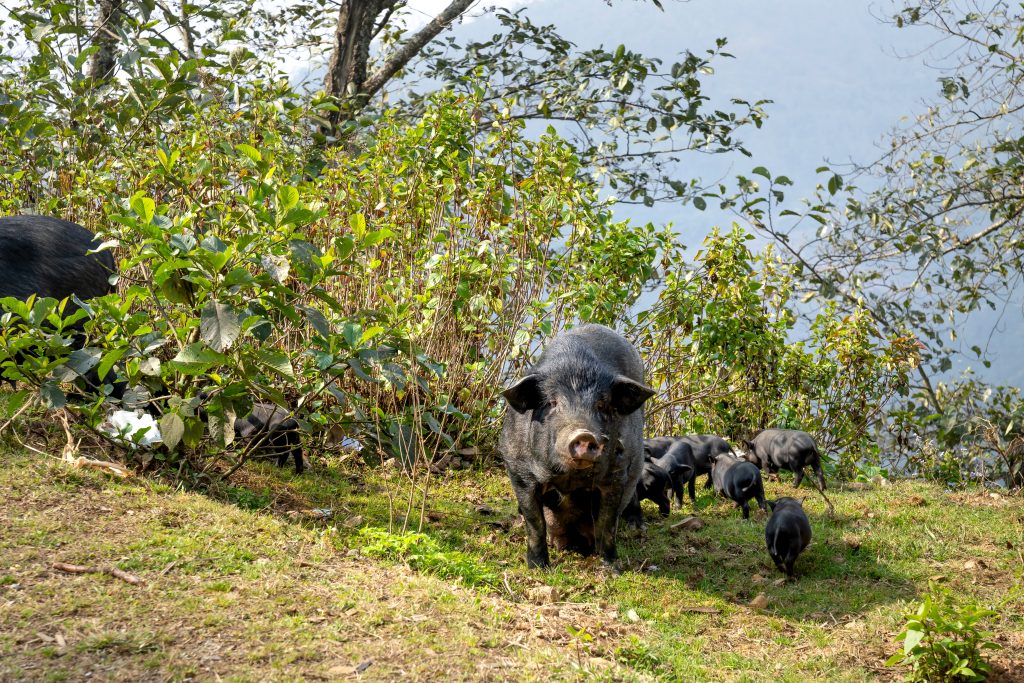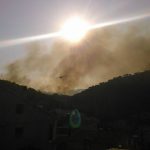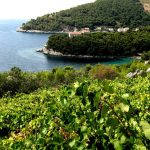June 9, 2023 – For the last few days, wild pigs in Zagreb could again be seen freely roaming around. Close encounters with these animals have become common in the last few years, especially in Maksimir and Dotrščina. But now they walked even further from Medvednica, to a children’s playground in Špansko and the hospital in Jankomir.
As Index writes, some speculate that they are attracted to garbage containers, but there are more reasons.
The Ministry of Agriculture provided a brief explanation as to why they come to Zagreb more and more.
“Wildlife is a natural phenomenon and instinctively, i.e., in search of food, it also appears in settlements where people leave waste. Furthermore, on the outskirts of settlements, there are often many unmaintained and neglected areas where wild game find shelter and peace.”
The Ministry of Agriculture also states that in recent years tenders have been announced for the co-financing of various protective measures. This includes mesh and electric fences worth around one million euros, as well as a tender of 530,900 euros for the co-financing of insurance policies aimed at eliminating the damage.
Wild Pigs Like Zagreb for a Few Reasons
Dr. sc. Nikič Šprem from the Faculty of Agriculture in Zagreb obtained his doctorate on the topic of wild pigs.
Šprem says that it seems that there are a few more wild pigs on Medvednica this year.
“For the last two years, we have had intensive culling due to the African Swine Fever Suppression Order. I assume, and I also have some unofficial information, that this year the number of wild pigs culled was somewhat lower than in 2021 and 2022”, says Šprem.
He points out that many factors led to what is happening now.
“I pointed out the problem and announced that it will get worse and worse. Namely, there are several key reasons why the wild pig population has increased.
First of all, a change in the habitat. In the past, the small fields at the foot of Medvednica were cultivated gardens. People maintained them. But today, they are neglected and overgrown fields that are an ideal habitat for wild pigs. They descended from Medvednica into the zone where there was no hunting. They found ideal conditions there”.
“I work at the Faculty of Agriculture, so sometimes I take walks to Dotrščina and Jazbina, to our vineyard. Wild pigs have caused great damage there. They have now found a zone where there is no hunting and where they have ideal conditions for breeding and living. No one touches them, they have food and it’s great,” explained Šprem.
Climate Change Positively Affects Wild Pigs in Zagreb and Elsewhere
One of the important factors is climate change, which many studies have shown to have a positive effect on wild pigs.
“Especially if you look at the last few winters, they were all extremely warm, without heavy snowfall. This is a prerequisite for wild pigs to have very good reproductive power. Severe winters reduce their reproductive capacity,” says Šprem.
Another problem is hybridization, i.e. crossbreeding between wild and domestic pigs.
“In animal husbandry, domestic pigs have been selected for years to become more fertile and have better quality meat. This was done for many different characteristics. When you look at today’s wild pig sows, they have eight or ten active teats. If you read the literature from In the 1930s and 1940s, you would find that they had four or six active teats. This is a concrete indication that the genome of domestic pigs has entered the wild population, which is why they are becoming more and more fertile,” our expert points out.
Their Response to Hunting
Another factor is the response of wild populations to hunting.
“If you intensively hunt wild pigs, they will increase their reproduction to maintain the species. In 2016, we did a study all over Croatia examining over 500 sows. We came to an astonishing result which showed that one sow has an average of seven cubs, which is a huge number. However, our legislation, which the Ministry of Agriculture adopts, does not follow this trend. It still deals with much smaller numbers in the increase of pigs. Unfortunately, our results have not been applied in legislation. This pains me. If we receive money from the state budget for scientific research, it would be normal for our results to be implemented in legislation,” Šprem complains.
Hunting of Wild Pigs in Zagreb on Medvednica Must not be Intensive
Another important factor that contributes to the problem is the fact that the intensity of hunting in Medvednica cannot be as high as in some other areas.
“All hunting techniques should not be used there because many hikers and mountaineers spend a lot of time in nature. Of course, the wild pig population on Medvednica cannot be successfully controlled that way. The result is that they started to descend towards the foothills. I have personally seen evidence of wild pigs in Maksimir. In the last two or three years, there have been articles in the media about their attacks on dogs there. This is to be expected,” explains Šprem.

Other Big Cities Have the Same Problem
The professor says that he has been pointing out the problem of the presence of wild pigs in big cities for years.
“If you type wild pig in Berlin or Barcelona into the search engine, you will see that the problem has existed for about 15 years. I spoke to a Barcelona colleague who told me that they remove about 500 wild animals a year from the city center. So, from the strict center. Barcelona and Berlin are extreme examples of wild pigs entering the city. For example, when they first entered Berlin, people said they were lovely animals that should not be touched. However, they did enormous damage to the city cemetery. You could say that they ransacked it. People are sensitive and sentimental about such things, so population control began. They implemented legal regulations, and in Berlin, they now more or less control the state of the population,” he says.
Fewer and Fewer Hunters
Globally, the fact that the number of hunters in Europe has decreased by two million in 15 years is also a big problem.
“We had 9 million of them, and today there are about 7 million. This is also the reason why there are more and more wild animals. There are fewer and fewer hunters, they are getting older, they have less and less time, and it is getting harder to control populations,” says Šprem.
Swine Fever is Near
He notes that he is particularly afraid of African swine fever.
“It’s in Hungary, only 220 km from our border. In Serbia, about 150 km from our border. In Italy, swine fever is raging in three places, Rome, Genoa, and Turin. It is a matter of time before the virus comes to Croatia, and it causes between 90% and 95% mortality. When it arrives, and it’s a matter of days, you won’t be calling me again about the problem of wild pigs and the damage they cause. I think there are methods which have been tried in big cities like Barcelona and Berlin, which can control their population. Unfortunately, the City of Zagreb did not take care of this. This problem was constantly pushed under the carpet,” Šprem concluded.










